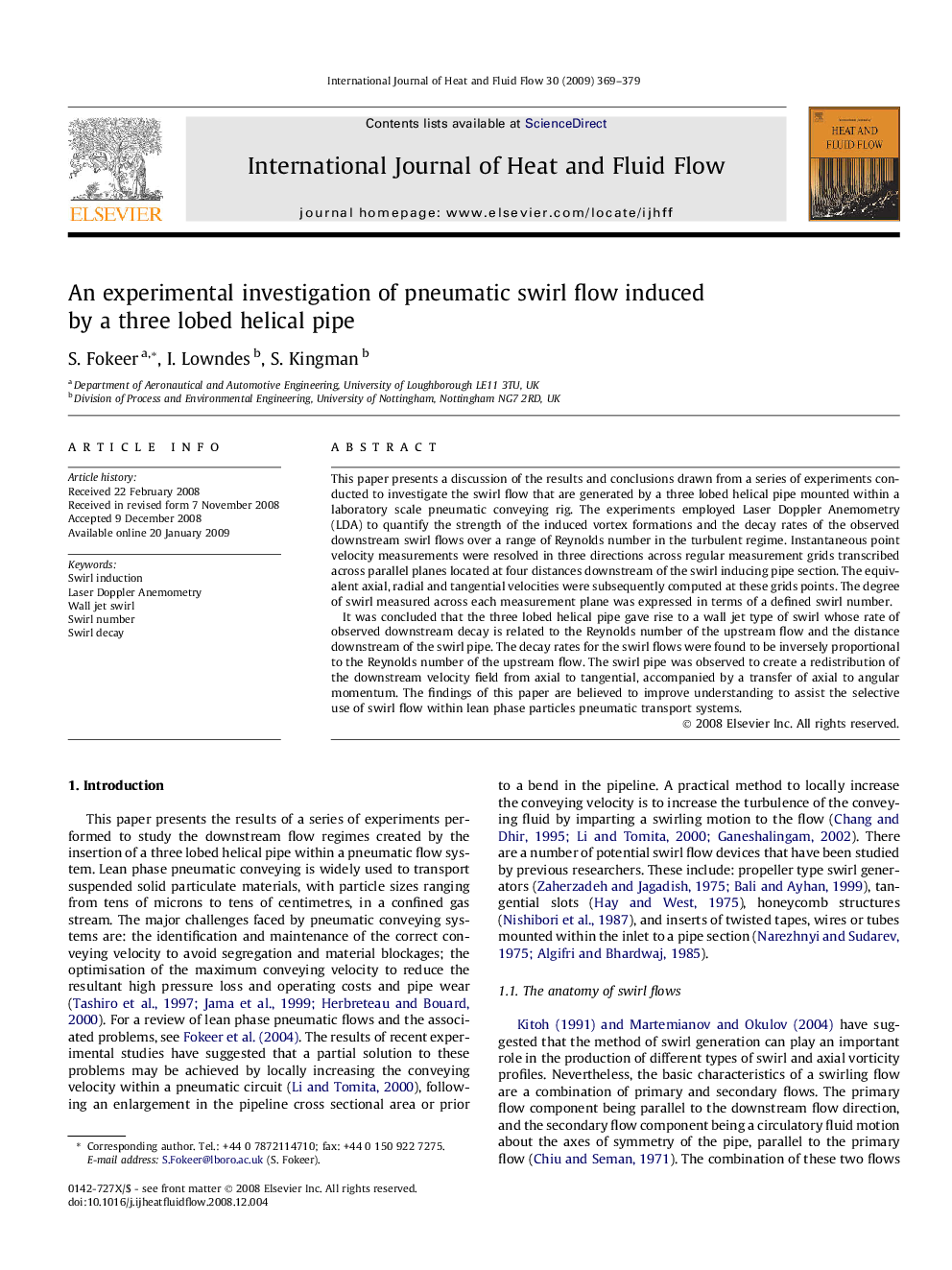| Article ID | Journal | Published Year | Pages | File Type |
|---|---|---|---|---|
| 655737 | International Journal of Heat and Fluid Flow | 2009 | 11 Pages |
This paper presents a discussion of the results and conclusions drawn from a series of experiments conducted to investigate the swirl flow that are generated by a three lobed helical pipe mounted within a laboratory scale pneumatic conveying rig. The experiments employed Laser Doppler Anemometry (LDA) to quantify the strength of the induced vortex formations and the decay rates of the observed downstream swirl flows over a range of Reynolds number in the turbulent regime. Instantaneous point velocity measurements were resolved in three directions across regular measurement grids transcribed across parallel planes located at four distances downstream of the swirl inducing pipe section. The equivalent axial, radial and tangential velocities were subsequently computed at these grids points. The degree of swirl measured across each measurement plane was expressed in terms of a defined swirl number.It was concluded that the three lobed helical pipe gave rise to a wall jet type of swirl whose rate of observed downstream decay is related to the Reynolds number of the upstream flow and the distance downstream of the swirl pipe. The decay rates for the swirl flows were found to be inversely proportional to the Reynolds number of the upstream flow. The swirl pipe was observed to create a redistribution of the downstream velocity field from axial to tangential, accompanied by a transfer of axial to angular momentum. The findings of this paper are believed to improve understanding to assist the selective use of swirl flow within lean phase particles pneumatic transport systems.
